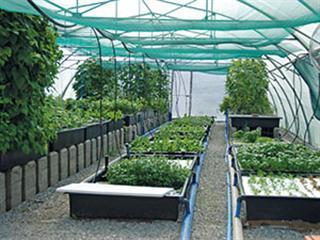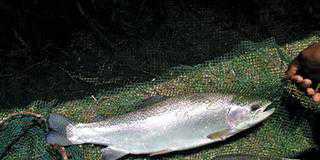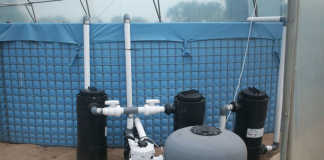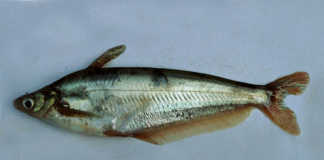
Aquaponics – the hydroponic cultivation of plants using fish waste as the primary source of nutrients – is rapidly gaining popularity in SA. The idea of a closed system where the waste from one form of production ‘fuels’ the food source for another, which in turn purifies the water for the primary producer, is attractive. In pond aquaculture, the fertilisation of pond water with manure to encourage blooms of phytoplankton (algae) and zooplankton (microscopic creatures) is a profitable way of reducing artificial feeding costs.
Ponds fertilised to the correct levels can produce 3t to 5t of tilapia/ha/year without supplementary feeding. In countries like South Africa, where the climate may be hostile towards the cultivation of certain plants or fish outdoors (due to cold), the use of greenhouse tunnels is the answer. Intensive production of fish in indoor closed systems always requires a high level of filtration to retain adequate water quality.
Where fish production is high enough to produce significant volumes of solid waste, as well as dissolved waste in the form of nitrite and nitrates, these need to be removed from the water to promote the growth and health of the fish.
These products are in fact plant fertilisers – and natural ones at that, and the plants that use them can be accurately termed ‘organically grown’.
Many vegetables and herbs can be grown hydroponically in fine gravel, coarse sand, or other inert growth mediums, such as polystyrene pellets or on floating polystyrene platforms with the roots hanging into water.
These plants derive their sole nutrients from the nutrient-rich water issuing from the fish culture containments wherein the fish are fed a pelleted diet.
Recycling systems
A simple recycling system can circulate the water to the plants in a number of ways. In some systems, the water is flooded into the containers in which the plants grow. After percolating through the medium and past the roots, the water is then channelled back to the fish tanks, cleaned of its nutrients (as far as the plants are concerned) and toxins (as far as the fish are concerned).
In other systems, the plants are cultivated on polystyrene rafts with their roots in the water, or in gravel beds through which the nutrient-rich water flows very gently. Pesticides to control insect infestations in the closed confines of a tunnel aren’t used, as the fish would be at risk. However, the tunnel does offer a certain degree of protection against some pests, compared to outdoor systems.
A technical problem with most aquaponics systems is the varying demands for – and tolerance of – warmth. Tilapia require elevated water temperatures of 25°C to 30°C to show optimum growth. To achieve this, the tunnel air temperature needs to be 2°C to 3°C higher. This is often deleterious to plant growth, so either the growth of the fish has to be compromised to some extent by the lower temperatures required by the plants, or vice versa.
Another challenge is getting the right balance between enough waste matter from the fish to adequately feed the plants and sufficient natural cleaning by the growing medium and plant roots to efficiently clean the water for the fish. In many cases, either the plants are starved of nutrients, or the fish may suffer because of polluted water.
Economically viable
Can aquaponics be economically viable? A 20m tunnel system that can be fitted into many large backyards, and which produces a regular crop of vegetables, herbs and other edible and healthy crops, as well as the occasional fish meal, has a relatively low running cost which is hard to scorn. Also, many people like the ‘mutually beneficial’ aspect of the process, and managing the welfare of live animals as well as crop cultivation.
Nicholas James is an ichthyologist and hatchery owner. Contact him at [email protected]. Please state ‘Aquaculture’ in the subject line of your email.













